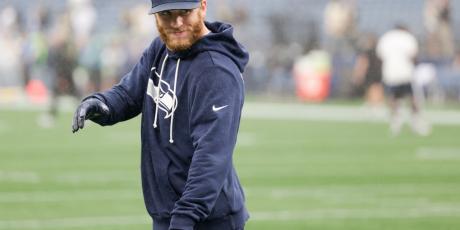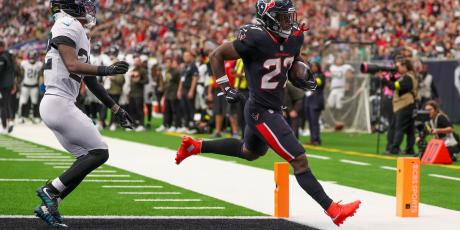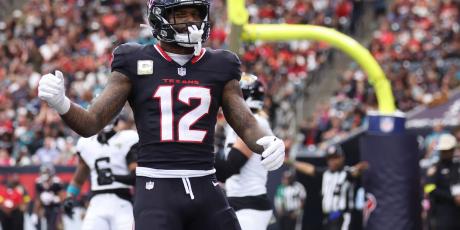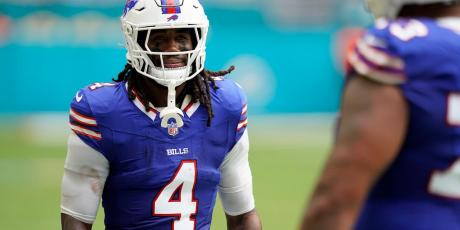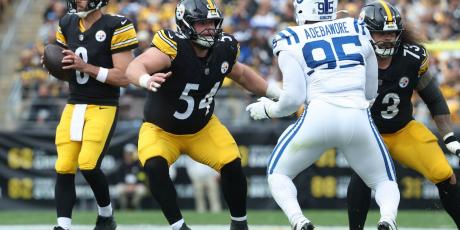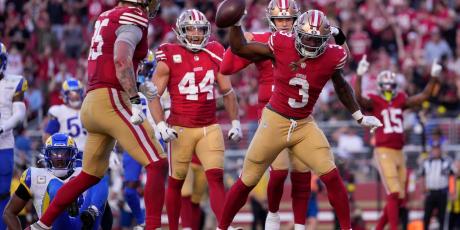Late Round Tight End Targets in FFPC
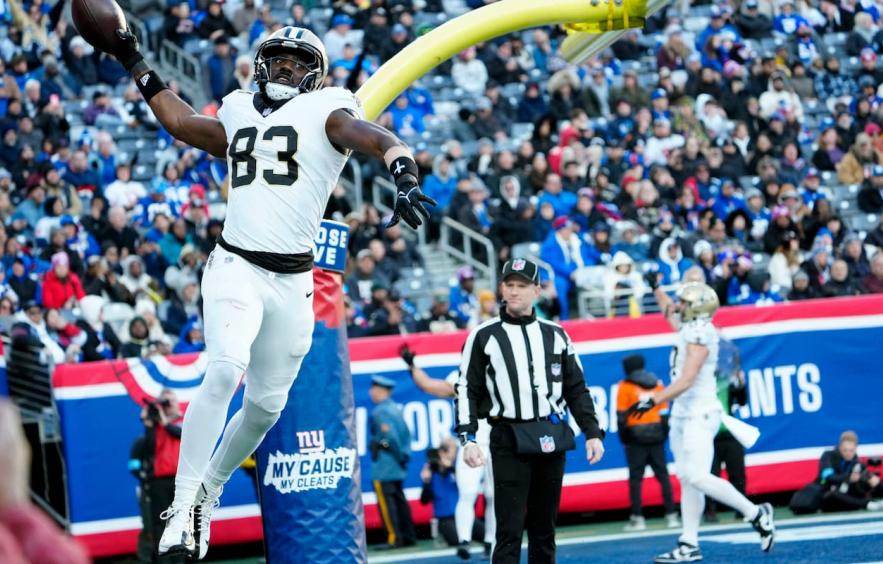
With FFPC drafts underway, one of the biggest edges every summer comes from finding tight ends late. If you don’t want to pay up for an elite option, the position can feel like a mess, but that’s also where the opportunity lies. Every year, we get a handful of players who smash their ADP and give you TE1 production despite being drafted as backups. Last year, Jonnu Smith was one of those guys, paying off late while most of the field swung and missed. This year, I’ve zeroed in on four names who are consistently going outside the top 150 picks and have paths to weekly startability.
Get $25 off your first FFPC team!
Juwan Johnson
FFPC ADP: TE31
The Saints made a real commitment to Johnson this offseason, handing him a three-year extension worth over $30 million with more than $21 million guaranteed. That’s not backup money. It locked in his role as a full-time player, and he’s coming off a career year with 50 catches and 548 yards while converting three red-zone looks into touchdowns. That role could grow in 2025 now that Kellen Moore is running the show in New Orleans. Moore’s history in Dallas and Los Angeles shows a willingness to feature tight ends, particularly in the red zone, and Johnson already profiles as one of the team’s best options near the goal line.
The QB situation is uncertain, at best, but that doesn’t mean multiple players can’t produce in what will likely be a team chucking from behind. Chris Olave and Rashid Shaheed are the top targets, but there’s still room for another weapon to step up. At a TE31 price tag, Johnson’s floor is bankable weekly usage with touchdown upside, and the ceiling is a top-12 finish if Moore leans into him.
Ja’Tavion Sanders
FFPC ADP: TE30
Sanders is a great late-round option as Tommy Tremble started camp on the PUP list and has barely worked with the team, while beat writers have gone as far as calling Sanders the offensive MVP of training camp. We saw a glimpse of his ceiling last year when, between Weeks 5–12, before a neck injury, he was on pace for over 660 yards. That’s a remarkable number for a young tight end. Sanders has the athleticism to turn short targets into big plays, and the Panthers desperately need playmakers. That likely will mostly be Tetairoa McMillan, but Sanders figures to have a sizable role as well.
With Tremble sidelined and Sanders dominating first-team reps, he’s already positioned as the clear starter. Drafting him at TE30 is a bet on talent, opportunity, and camp buzz all aligning—if you’re swinging late, this is exactly the type of profile you want.
Hunter Henry
FFPC ADP: TE18
Hunter Henry isn’t flashy, but he’s the best value if you’re looking for stability. He led the Patriots in targets (97), receptions (66), and yards (674) last year, and once Drake Maye took over, Henry was quietly a top-10 tight end in terms of points per game. He averaged 11.3 PPR points in Maye’s full starts, which is TE8 pace. That kind of usage is hard to find outside of the early rounds. New England’s offense should be much better this year with Josh McDaniels back calling plays and upgrades across the offensive line.
Henry isn’t going to suddenly turn into Travis Kelce, but if you want a steady option who gives you weekly volume, he’s exactly the kind of player who will hold your roster together. At TE20 in drafts, Henry is priced closer to a part-time streamer than a team leader in targets. While that likely won’t happen again with Stefon Diggs in town but he should be one of the top pass-catchers for an improved Patriots offense.
Mason Taylor
FFPC ADP: TE25
Draft capital matters for tight ends, and the Jets spent pick 42 overall on Taylor this spring. Reports out of camp have been glowing, with teammates like Garrett Wilson already praising how quickly Taylor has adjusted to the pro game. He’s expected to have a full-time role almost immediately, and the Jets’ first depth chart had him pushing Jeremy Ruckert for starting duties. He has played as a full-time player in preseason as well. What makes Taylor so interesting is the target competition. Beyond Wilson, the receiver group is a mix of veterans like Josh Reynolds and Allen Lazard and rookies still trying to carve out roles. There’s a very real path for Taylor to emerge as the No. 2 option in the passing game by midseason. Despite some uncertainty surrounding Justin Fields' ability as a QB, Cole Kmet previously delivered a TE1 season alongside DJ Moore. Plus, Taylor’s athleticism gives him a shot to be more than just a checkdown option. At the cost of basically nothing in drafts, he’s a perfect TE2/3 with the upside to matter in tight-end premium formats.
The way I like to build it in FFPC is to mix and match these profiles. Juwan Johnson gives you the floor of a locked-in role with red-zone value. Sanders is the swing for upside who could turn into a weekly starter if the camp reports translate into real usage. Henry is the safety blanket—he already produced TE1 numbers with Maye, and he’ll be there for you every week. Taylor is the sleeper dart you stash for October and hope he develops into Fields’ No. 2 target. If you punt TE early, you can grab two or three of these guys late and piece together a very competitive room without spending up.


